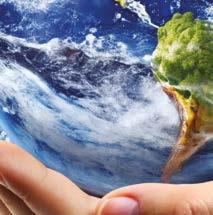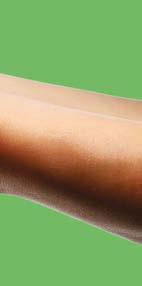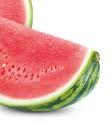Silvana Sardi


Silvana Sardi












To download Audio tracks
• Use the ELILINK app

• Download the app from
• Scan the cover

www.eligradedreaders.com
Extra activities online
To get the most out of each reader, you can find extra activities for each title on our website: www.eligradedreaders.com
• Extra activities for students
• Extra resources for teachers
Book brief 1 2 3 4 5
Some quotes about water to give you an idea of a few of the things you will read about in this book.
‘Thousands have lived without love, not one without water.’
W. H. Auden
British poet
‘Water is life and clean water means health.’
Audrey Hepburn
British actress and UNICEF Goodwill Ambassador from 1988 to 1993 for Children’s Rights
‘Water is the driver of nature.’
Leonardo da Vinci
Painter, engineer, scientist and more
‘‘When the well is dry, we'll know the worth of water.’
Benjamin Franklin
One of the Founding Fathers of the United States
‘If there is magic on this planet, it is contained in water.’
Loren Eiseley
American philosopher and nature writer
In this reader:
21st Century Skills
2030 Agenda
KEY
Simple Story
Glossary Picture Caption
To encourage students to connect the story to the world they live in.
A2 level activities.
A brief summary of the paragraph.
Explanation of difficult words.
A brief explanation of the picture.
Audio start stop
These icons indicate the parts of the story that are recorded.
To encourage students to develop their critical thinking skills.
Silvana Sardi
There is no life without water
















Our Planet




The ELI Readers collection is a complete range of books and plays for readers of all ages, ranging from captivating contemporary stories to timeless classics. There are four series, each catering for a different age group: First ELI Readers, Young ELI Readers, Teen ELI Readers and Young Adult ELI Readers. The books are carefully edited and beautifully illustrated to capture the essence of the stories and plots. The readers are supplemented with ‘Focus on’ texts packed with background information about the topics covered.


Our Planet


Our Planet introduces learners to exciting topics related to our world.

The Wonders of Water
Silvana Sardi
ELI Readers
Founder and Series Editors
Paola Accattoli, Grazia Ancillani, Daniele Garbuglia (Art Director)
Graphic Design
Emilia Coari
Production Manager
Francesco Capitano
Photo credits
Shutterstock

© 2025
ELI s.r.l. P.O. Box 6 62019 Recanati MC Italy
T +39 071750701
F +39 071977851 info@elionline.com www.elionline.com
Typeset in 12 / 17 pt
Fulmar designed by Leo Philp
Printed in Italy by Tecnostampa - Pigini Group Printing Division
Loreto - Trevi - ERT290.10
ISBN 978-88-536-4575-3
First edition: March 2025 www.eligradedreaders.com






Before you read
1 Match the pictures with the words.
a pond
b lake
c drop
d waterfall
e river
f condensation
g canal
h puddle
i vapour

Writing








2 Complete the sentences with some of the words (singular or plural forms) from exercise 1.
1 Children usually love jumping in .................................... as they walk along the road on a rainy day.
2 My neighbours have a small .................................... in their garden, where they keep some fish.
3 The Nile in Africa is the longest .................................... in the world.
4 The noise of the .................................... was very loud as the water came down over the high rocks.
5 The Suez .................................... is the shortest shipping route between Europe and Asia.
6 The Dead Sea is actually a ,and has much more salt than others in the world.
3 Discuss the questions with a partner and write your answers.
1 Do you think people who live near the sea are lucky? Why? / Why not? .................................................................................................................

2 What do you do on a rainy day? .................................................................................................................
3 What do you use water for in your home? .................................................................................................................
4 Has there ever been a time when you’ve been afraid of water, for example while swimming or during a storm? .................................................................................................................
Listening A2 KEY
At the South Pole, the temperature in summer is about (3) . The Arctic is an (4) surrounded by land. Antarctica is the (5) .................................... continent in the world. 3
4 Listen to part of Chapter 1. Complete the sentences below with the missing information.
Water can be a gas, a liquid or a (1) . The South Pole is (2) .................................... than the North Pole.
2
All forms of life on Earth need water. Without water, nothing can survive1 , which is why ‘Water is Life’. Let’s imagine for a moment that you’re speaking to someone who doesn’t know what water is. How can you explain what it’s like? What shape is it? What colour is it? What does it smell2 like? What does it feel like? Hmm… not easy to find the words to describe it, right? Now, here’s an even more difficult question to answer:
Where does water come from?
You probably answered, ‘from the tap3 in the kitchen or bathroom at home’, but before that? Don’t worry, because this is a question that many scientists are still trying to find the answer to.
2 smell you use your nose to smell



































The four planets closest to the Sun (Mercury, Venus, Earth and Mars) are known as the Inner Planets of the Solar System. The four farthest away from the Sun (Jupiter, Saturn, Uranus, and Neptune) are in the Outer Solar System.









Our oceans cover about 71% of the Earth’s surface1. From outer space2 , all this water makes it look like a blue ball, so that’s why Earth is often called the ‘Blue Planet’. So how did this water arrive on our planet?
Some scientists believe that our water came from comets (small icy objects with a long ‘tail’ of gas) and asteroids (small rocks) that first formed in the Outer Solar System. Then, they hit our planet Earth as it was forming. Others think our water came from a special group of meteorites (pieces of rock or metal). They say that billions of years ago, Earth was a real water world completely covered by a global3 ocean, with very little or no land at all.
However, other scientists believe that maybe water has been on Earth since the planet formed, without any help from bodies from outer space. These studies come up with new ideas every time, so we’ll just have to wait and see who’s right in the future.
1 surface the top or outside part of something
2 outer space where all the stars and planets are 3 global worldwide





















































































































The North and South Poles get no daylight during winter because of their position.









Water in its different forms
As we all know, water can take the form of a gas, a liquid or a solid (ice). There’s usually more ice in winter, but ice is present all year at the North and South Poles and on the tops of high mountains. So, which pole do you think is colder?
Most people would probably say the North Pole is colder, just because we usually think of the north as being colder than the south, but surprise, surprise, it’s actually the South Pole that’s colder, with temperatures in winter around -60°C and about -28°C in summer!
This is because the North Pole is situated in the middle of the Arctic Ocean, which is covered in sea ice for most of the year, while the South Pole is on the continent of Antarctica. Therefore, the Arctic is an ocean surrounded by land, while Antarctica is land surrounded by ocean. Water cools more slowly than land, so this helps the Arctic to stay warmer than the Antarctic. What's more, the Arctic is at sea level, while Antarctica is the highest continent in the world, and the higher you go, the colder it gets. 3


Polar bears live in the Arctic, while penguins live in the Antarctic.



One of the most famous glaciers in the world is the Perito Moreno Glacier in Patagonia, Argentina. Thousands of tourists visit this UNESCO World Heritage site every year.
4



1 state form






The water cycle is how water moves around the Earth in its different states1 . Our oceans, rivers and lakes are examples of water in its liquid form, and this form can even be found underground. Solid ice is found in glaciers2 , snow and, as said before, at the North and South Poles, while water vapour3 is found in the Earth’s atmosphere 4 .
There are four main parts of the water cycle: Evaporation, Condensation, Precipitation and Collection. First, water evaporates, becoming vapour. Then, this invisible5 water vapour rises in warm air, cools down, and becomes clouds. Clouds are made up of tiny6 water droplets7, and when they become too heavy, these droplets fall back to Earth in the form of rain. Rain is then collected by oceans and rivers, and the water cycle starts all over again. When temperatures
2 glacier a slow-moving mass or river of ice
3 vapour water in the form of a gas
4 atmosphere (here) the gases around our planet
5 invisible that cannot be seen
6 tiny very, very small
7 droplet
are below zero, water vapour condenses directly into ice without going through the liquid stage, and this is when we get snow. So, the water cycle can be thought of as nature’s way of recycling 1 water!
1 recycle use again
Reading A2 KEY
1 Choose A, B or C to complete the sentences about Chapter 1.
1 Without water, .................................... can survive. A something B nothing C anything
2 Our oceans cover about 71% of the Earth’s .................................... . A surface B top C outside
3 .................................... are small icy objects with a long ‘tail’ of gas. A Asteroids B Meteorites C Comets
4 The water .................................... is how water moves around the Earth in its different states. A circle B cycle C round
5 Water vapour is found in the Earth’s .................................... . A atmosphere B temperature C colouring
6 Water vapour rises in warm air and then cools down and becomes . A fog B rain C clouds
Writing A2 KEY
2 Use the three pictures to write a story (at least 35 words).



5
3 Listen to the start of Chapter 2 and choose the correct answer (A, B, or C).
1 A child’s body is made up of .................................... water.
A ■ 50% B ■ 60% C ■ 80%
2 Cells…
A ■ turn the food we eat into water.
B ■ need water to keep them healthy.
C ■ keep our body cool.
3 The amount of water you need to drink
A ■ depends on how old you are.
B ■ depends on how thirsty you are.
C ■ should reach an ideal body water level of 60%.
4 Most people need…
A ■ over 2 litres a day.
B ■ about 2 litres a day.
C ■ less than 2 litres a day.
5 Some of the water we need comes from eating
A ■ fruit. B ■ fish. C ■ meat.
6 If your body loses too much water,
A ■ you may feel you have no energy.
B ■ your heart works better.
C ■ you can think more clearly.
7 A person can live without water for
A ■ three weeks.
B ■ three minutes.
C ■ three days.
Did you know that we are mostly made of water?
That’s why we need to drink to stay alive, and keep everything working well in our body. The amount 1 of water in your body depends on 2 your age. This amount goes from 80% in children, to 50% in adults between the ages of fifty and eighty.
What does all this water do in our body?
We need water to make new cells in our body and keep them healthy. Cells are the ‘building blocks’ of all living things, and they’re full of water. These cells do important things like turning the food we eat into energy3 . As well as many other functions4, water also helps keep our body cool. So, how much water should we drink? Well, to reach5 an ideal body water level of 70%, most of us need about two litres of water a day, depending on our age and other factors like where we live.
1 amount how much you have of something
2 depend on be decided by something
3 energy what you need to be able to work, move, play etc.
4 function use
5 reach arrive at




The heart is 75-80% water, while the brain is 80-85% water.

1 plenty lots
2 lack being without or not having enough of something







Not all of the water we need comes only from drinking liquids. We get some of it from the food we eat too. Fruit and vegetables have a lot of water in them, that’s why they’re good for you, so make sure you eat plenty1 of them!
If your body loses too much water, you become dehydrated, and this lack 2 of water can be very dangerous. When you’re dehydrated, it’s more difficult for you to think clearly, and you may feel dizzy3 . It can also make you feel weak and tired. Dehydration can also affect4 how well organs like your heart and brain work too. They say that a person can live for three minutes without air (oxygen), three days without water, and three weeks without food.



3 dizzy when you feel your head inside is going round and round

4 affect (here) change in a bad way
































































































































































































































































































